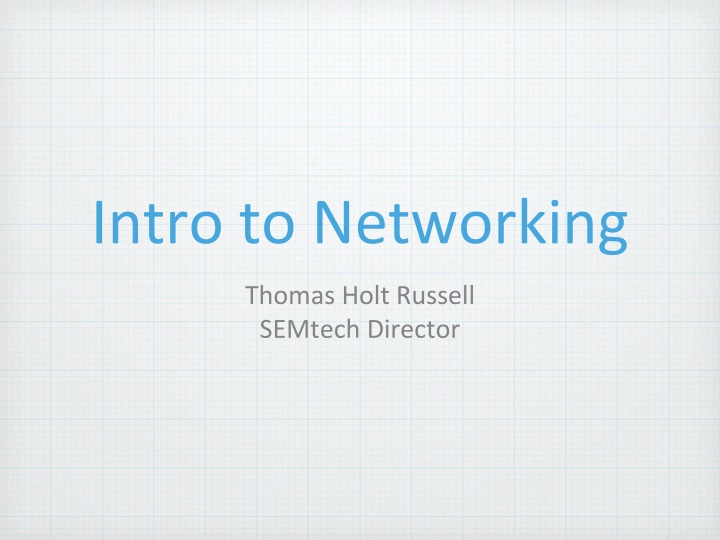
Computer Networks: A Comprehensive Overview
Explore the world of computer networks with this informative guide covering the basics, different types such as LAN, MAN, and WAN, as well as client-server and peer-to-peer networks. Learn how networks facilitate sharing resources and enabling communication through various applications.
Download Presentation

Please find below an Image/Link to download the presentation.
The content on the website is provided AS IS for your information and personal use only. It may not be sold, licensed, or shared on other websites without obtaining consent from the author. If you encounter any issues during the download, it is possible that the publisher has removed the file from their server.
You are allowed to download the files provided on this website for personal or commercial use, subject to the condition that they are used lawfully. All files are the property of their respective owners.
The content on the website is provided AS IS for your information and personal use only. It may not be sold, licensed, or shared on other websites without obtaining consent from the author.
E N D
Presentation Transcript
Intro to Networking Thomas Holt Russell SEMtech Director
What is a Computer Network? A set of computers connected together for the purpose of sharing resources.
Networks are use for email, video conferencing, instant messaging Enable users to share a single hardware device such as printers and scanners enable file sharing Enable software sharing makes information easier to access and maintain
Different Types of Networks Local Area Networks (LAN) A small network, limited to a single collection of machines and linked together interconnecting devices in a small geographic area
Different Types of Networks Metropolitan Area Network (MAN) An internetwork confined to a geographic region, such as a city or county; uses 3rd party communications providers to provide connectivity
Different Types of Networks Wide Area Network (WAN) Internetworks that are geographically dispersed and use 3rd party communications providers to provide connectivity between locations
Clients and Servers Client - a workstation running a client OS or network software that request resources from a server Server is a computer with software installed on it that provides a network service to client computers
Different Types of Networks Peer-to-Peer Networks All computers can function as clients or servers as needed. There s no centralized control over network resources
Different Types of Networks Client Server Networks Provide centralized control over network resources.
Strengths & Weaknesses of P2P and Server Based Networks
Network Topologies Star - all computers & devices are connected to a centrally located hub/switch
Network Topologies Bus - all computers and devices are connected in a series to a single linear cable called a trunk or backbone. No central point. Bothe ends must be terminated.
Network Topologies Ring - all computers and devices are connected to a cable that forms a closed loop. Each computer is a repeater. If one computer fails the whole network goes down.
Internet The Internet is the most common resource shared today
Is the Internet and World Wide Web (WWW) the same thing? The Answer is Absolutely Not! Internet - is a computer network that links millions of computers all over the world (the physical network) World Wide Web - Is a collection of Web pages available through the Internet
From ARPANET to Internet 2 ARPARNET - Came before the Internet Created in 1969 and stood for Advanced Research ProjectsAgency
